
Acanthaceae is a family of dicotyledonous flowering plants containing almost 250 genera and about 2500 species. Most are tropical herbs, shrubs, or twining vines; some are epiphytes. Only a few species are distributed in temperate regions. The four main centres of distribution are Indonesia and Malaysia, Africa, Brazil, and Central America. Representatives of the family can be found in nearly every habitat, including dense or open forests, scrublands, wet fields and valleys, sea coast and marine areas, swamps, and mangrove forests.
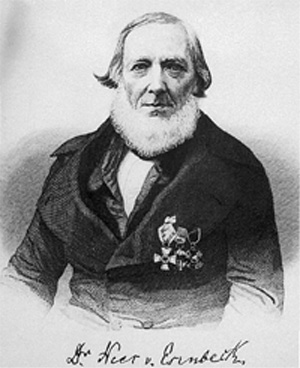
Christian Gottfried Daniel Nees von Esenbeck was a prolific German botanist, physician, zoologist, and natural philosopher. He was a contemporary of Goethe and was born within the lifetime of Linnaeus. He described approximately 7,000 plant species. His last official act as president of the German Academy of Natural Scientists Leopoldina was to admit Charles Darwin as a member. He was the author of numerous monographs on botany and zoology. His best-known works deal with fungi.

Dendroceros is a genus of hornworts in the family Dendrocerotaceae. The genus contains about 51 species native to tropical and sub-tropical regions of the world.

Microstegium is a genus of African, Asian, and Pacific Island plants in the sorghum tribe within the grass family. Browntop is a common name.
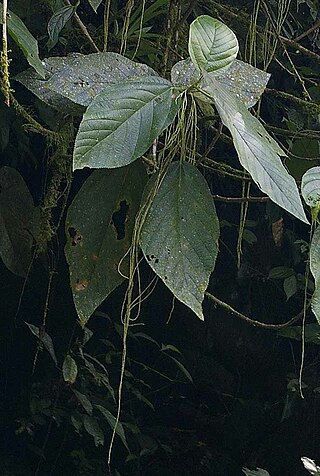
Myriocarpa is a genus woody plant which ranges in size from shrubs to small trees and is endemic to Central and South America. Within the Urticaceae, Myriocarpa is characterized by long pendulous string-like female inflorescences of apparently naked flowers and stems which release a watery latex when cut. Estimates for the diversity of the genus range from five to eighteen species. Research for Flora Mesoamericana indicates that there are probably fifteen to twenty species.
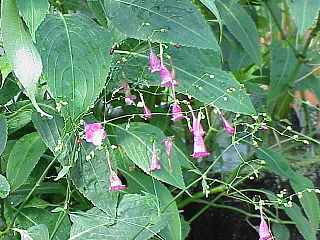
Peristrophe was a genus of up to 40 species of flowering plants: that are now usually considered synonyms in the genus Dicliptera Juss.
Blepharis dhofarensis is a species of plant in the family Acanthaceae. It is a shrub that grows to around 5m tall and is found in Oman and Yemen. Blepharis dhofarensis grows on wet escarpment woodlands and it prefers dense thickets on steep slopes. It is threatened by habitat loss. Recent molecular work has placed it in the genus Acanthus instead of Blepharis.
Johannes Conrad Schauer was a botanist interested in spermatophytes. He was born in Frankfurt am Main and attended the gymnasium of Mainz from 1825 to 1837. For the next three years he worked at the Hofgarten of Würzburg. Schauer then gained a position as assistant at the botanical garden at Bonn where he worked until 1832 when he was placed in charge of the botanic garden in Breslau, with C.G. Nees. He gained the degree of Doctor of Philosophy at the University of Erlangen-Nuremberg 1835 and was appointed professor of botany at the University of Greifswald from 1843 until his death in 1848.

Tetramolopium is a genus of plants in the tribe Astereae within the family Asteraceae.

Arthropogon is a genus of South American and Caribbean bunchgrass plants in the grass family.

Alexgeorgea is a genus of three plant species found in Western Australia belonging to the family Restionaceae named in honour of the botanist Alex George in 1976. The flowers of the female and large nut-like fruit are completely underground except for the stigmas, which extend out of the ground as 3 purple or red threads.
Richard Brinsley Hinds FRCS was a British naval surgeon, botanist and malacologist. He sailed on the 1835–42 voyage by HMS Sulphur to explore the Pacific Ocean, and edited the natural history reports of that expedition.

Schaueria is a genus of flowering plants in the family Acanthaceae. They are endemic to Brazil, from Bahia to Rio Grande do Sul. They are characterized by small elongated white or yellow flowers and narrow to thread-like green or yellow bracts. They are found mainly in rain forests, semi-deciduous mountain forests, and restingas. They are pollinated by bees and hummingbirds.
Thomas Franklin Daniel is an American botanist, and teacher. He is a specialist of the botanical family Acanthaceae. In 1975 he obtained his undergraduate from Duke University. In 1980, he obtained his doctorate at the University of Michigan. In 1981, he was assistant professor. Between 1981 and 1985 he was an assistant curator of the Arizona State University Herbarium.
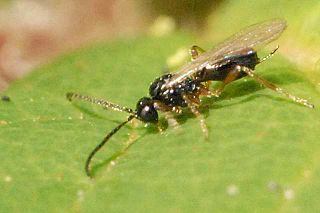
Blacini is a tribe of braconid Parasitoid wasps. Formerly the subfamily Blacinae, this group was demoted to a tribe and placed within the Brachistinae based on molecular evidence in 2011.
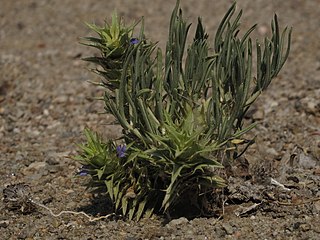
Blepharis grossa is a species of plant in the family Acanthaceae native to Angola, Namibia, and the Cape Provinces.

Yeatesia is a putative genus of flowering plants in the family Acanthaceae, found in northeast Mexico and the southeast United States, from Texas to Florida. Each of its species grows in very different habitats; Yeatesia mabryi is found in hardwood forests in Mexico, Y. platystegia prefers semiarid scrublands in Mexico and Texas, and Y. viridiflora grows in wetter forest bluffs and along water courses in US Gulf Coast states. Molecular evidence shows that Yeatesia is not a monophyletic genus.
Sphinctacanthus is a genus of flowering plants in the family Acanthaceae, native to Myanmar and Sumatra. Poorly attested, it seems to be found in tropical evergreen forests.
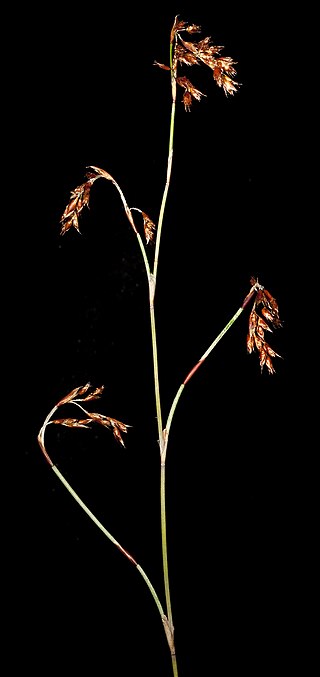
Leptocarpus coangustatus is a species of plant in the Restionaceae (rush) family, endemic to Western Australia.














